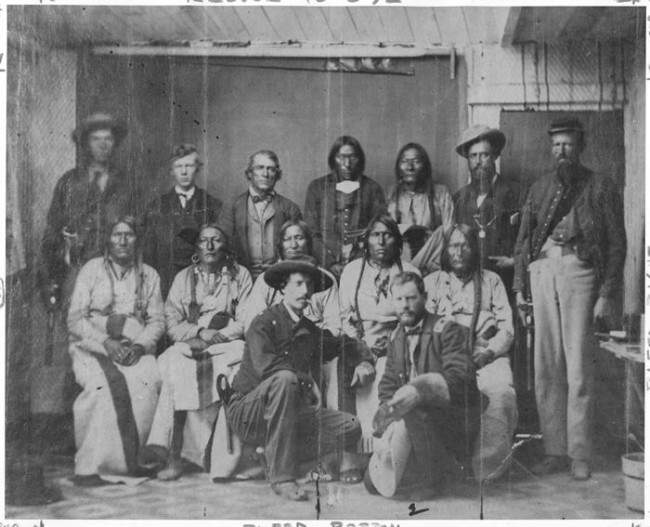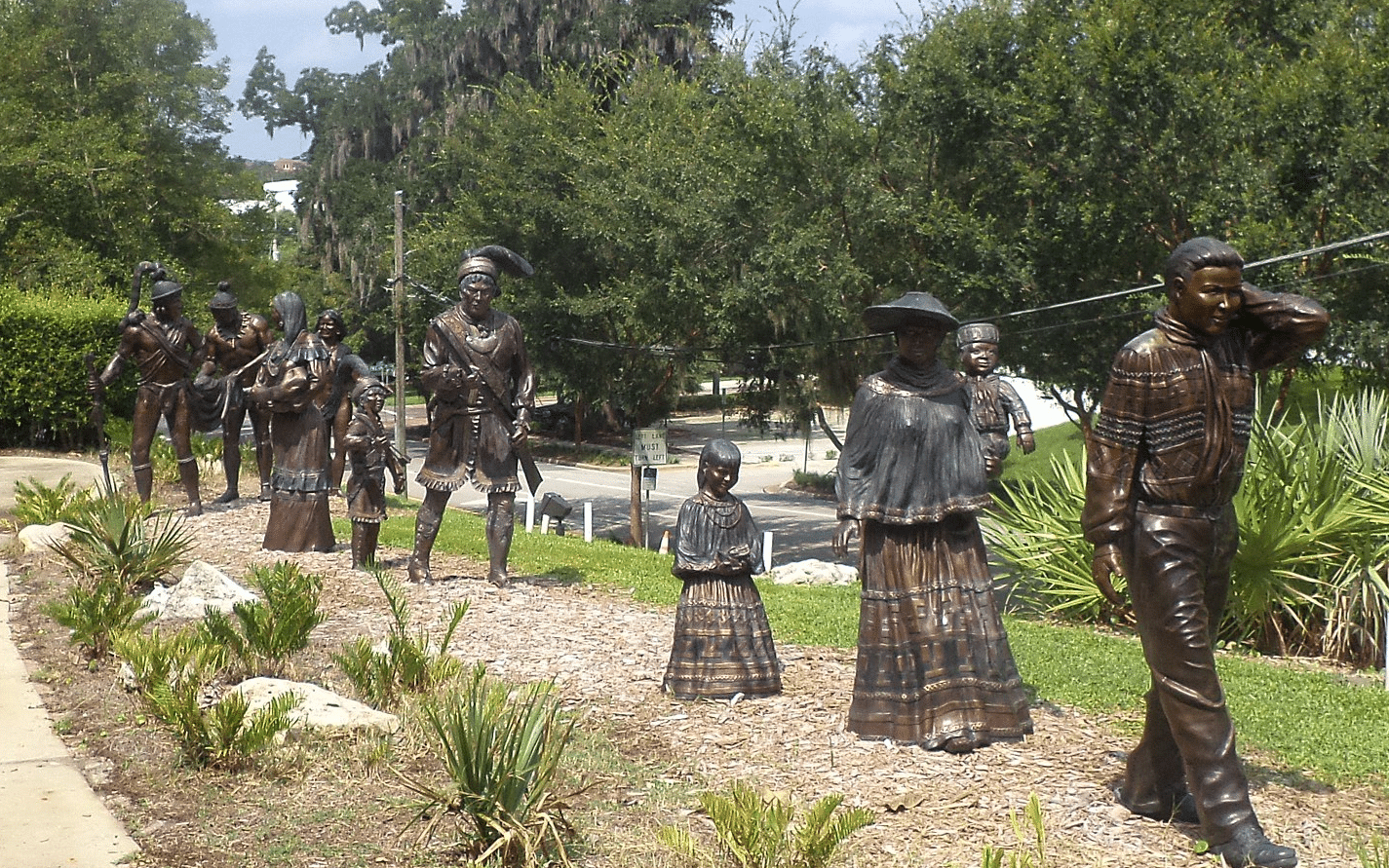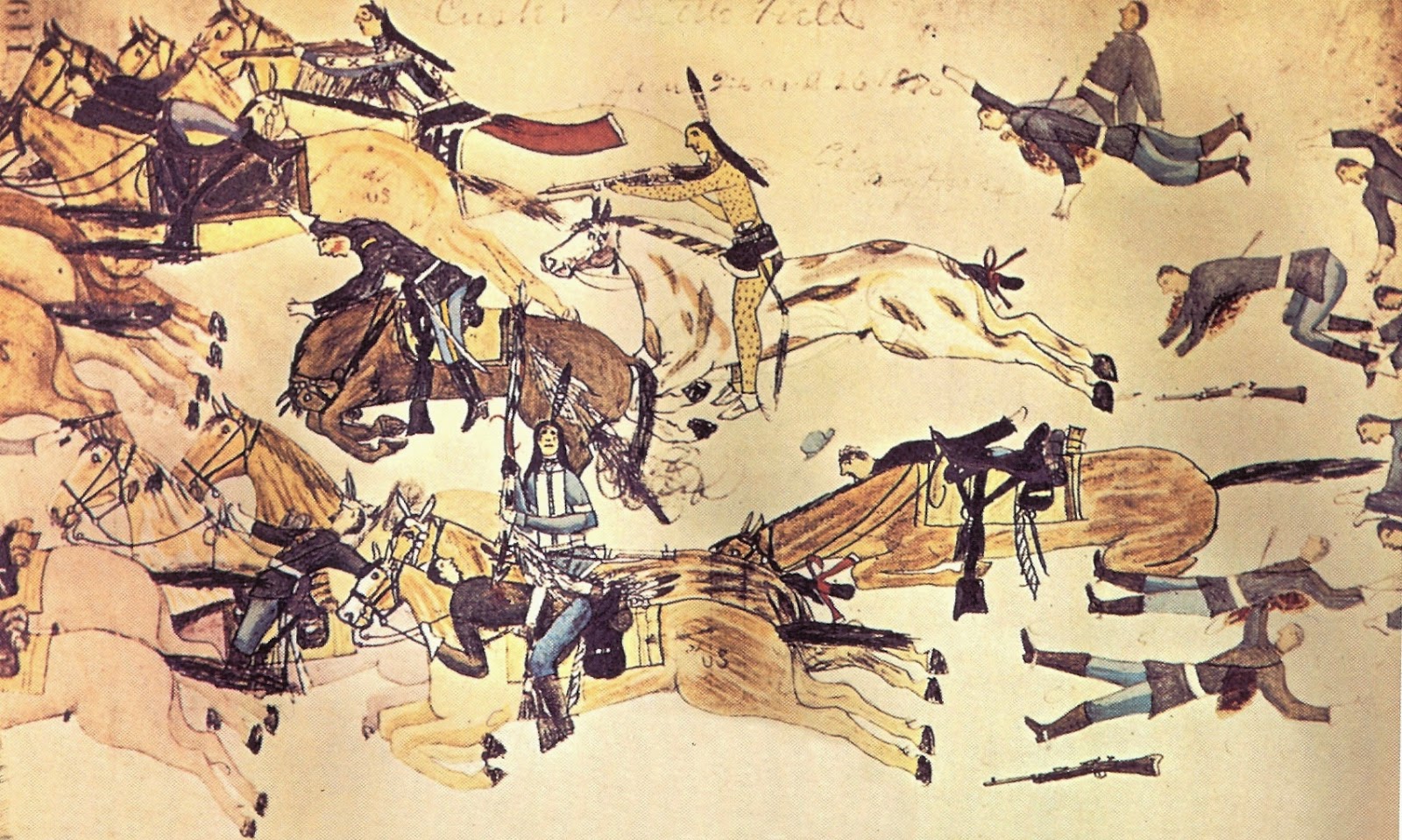On Nov. 29, 1864, a Colorado Cavalry unit, acting on orders from Colorado’s governor John Evans and ignoring a white surrender flag flying just below a U.S. flag, brutally attacked Cheyenne and Arapaho Tribes including Chief Black Kettle (middle row, seated, 3rd from left in photo), in what became known as the Sand Creek Massacre.
A year earlier, Black Kettle had visited Washington, where the Commissioner of Indian Affairs had presented him with a 34 star flag, saying that soldiers would never fire on him as long as he flew the Stars and Stripes. The chief flew the flag above his tipi, together with a white flag as a further sign of peace. [From Sole Society.]
As is explained at the Sand Creek Massacre NPS site,
Over the course of eight hours the troops killed around 230 Cheyenne and Arapaho people composed mostly of women, children, and the elderly. During the afternoon and following day, the soldiers wandered over the field committing atrocities on the dead before departing the scene on December 1 to resume campaigning.

A delegation of Arapaho and Cheyenne leaders met with the U.S. military on Sept. 28, 1864, at Camp Weld, Colo., to seek peace on the plains east of Denver, almost two months before the Sand Creek Massacre. Source: Denver Public Library, Western History Collection
Captain Silas Soule (kneeling in photo on the right), raised in an abolitionist family, ordered his troops not to participate in the attack and testified publicly about the massacre. Soule was assassinated the next year.
In contemporary Colorado, the Colonel in charge of the massacre (John Chivington) has a town named after him and the governor (Evans) has a mountain named for him. As of this writing, Silas Soule’s memory is not preserved with any official named entities.
Learn More
 The Horrific Sand Creek Massacre Will Be Forgotten No More an article in the Smithsonian Magazine about how the opening of a national historic site in Colorado helps restore to public memory this atrocity perpetrated on Native Americans.
The Horrific Sand Creek Massacre Will Be Forgotten No More an article in the Smithsonian Magazine about how the opening of a national historic site in Colorado helps restore to public memory this atrocity perpetrated on Native Americans.
Choke Creek, a young adult novel by Lauren Smalls, tells the story of two families who trace their roots to the Indian Wars. Fifteen-year-old Evie Glauber is descended from the newspaperman who reported on the famous Battle of Choke Creek, while Eason Swale, the boy she loves, is the great-grandson of a cavalryman who fought in it.
A Misplaced Massacre: Struggling over the Memory of Sand Creek, author Ari Kelman unearths the stories of those who lived through the atrocity, as well as those who grappled with its troubling legacy, to reveal how the intertwined histories of the conquest, colonization, and the U.S. Civil War left enduring national scars.












Twitter
Google plus
LinkedIn